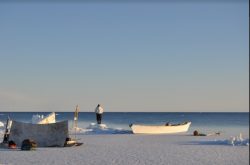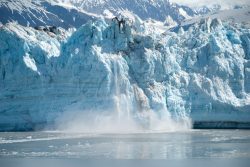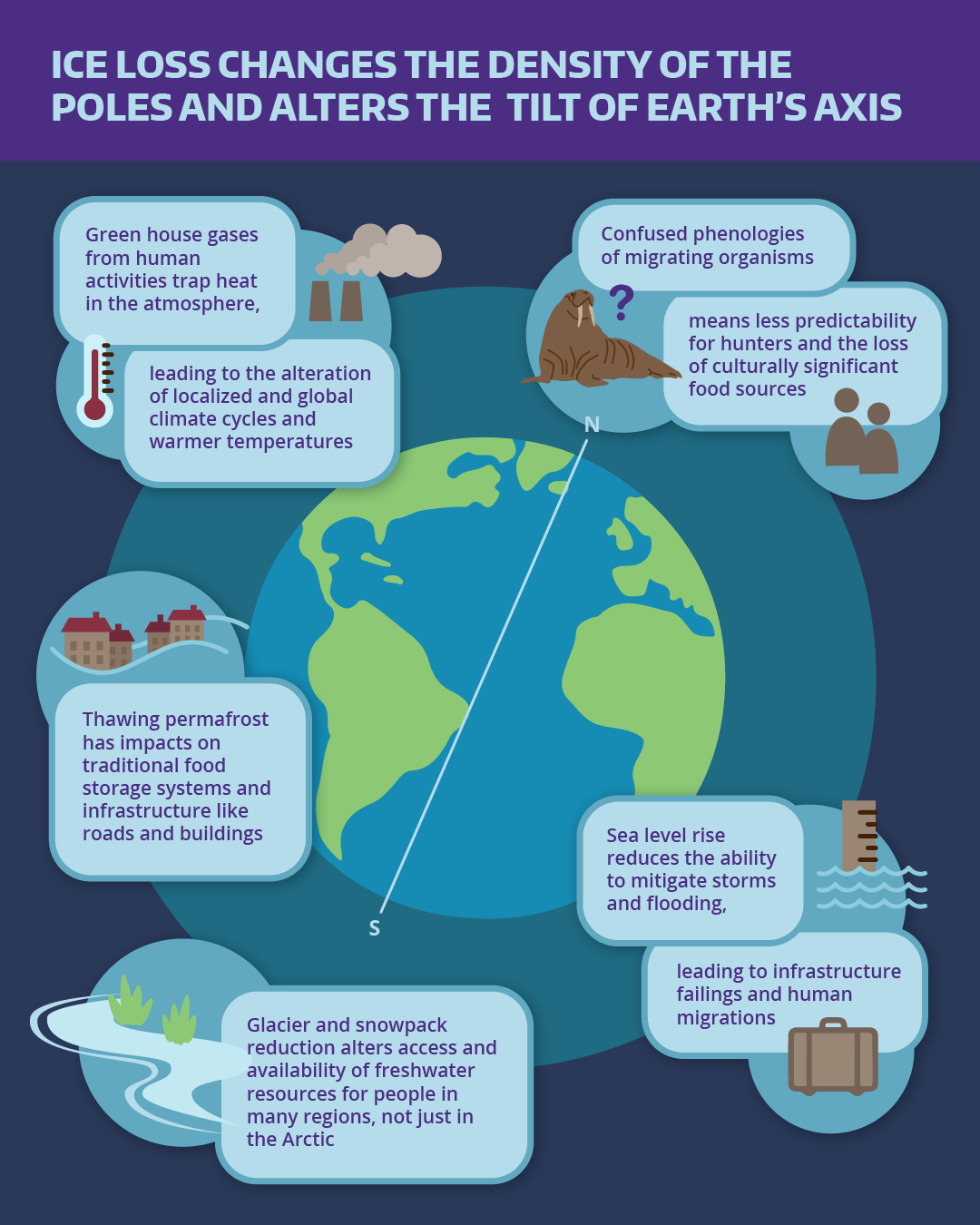Situated on an Arctic barrier island along the northwest coast of Alaska is the village of Kivalina, an Iñupiaq community of about 500 people. Colleen Swan, city administrator and coordinator of its volunteer Search and Rescue organization, is an advocate for her community and has always taken concerns about Indigenous health, environment and identity seriously, and works to seek out solutions. Recently, she was approached by a curious neighbor with a perplexing observation.

“An elder in the community has gone outside every night of her life to look at the stars,” Swan says, “and she told me one day, years ago, that the stars have moved. How could that happen? What could cause that?”
The question wasn’t rhetorical, but was directed towards P. Joshua Griffin, jointly appointed assistant professor at the University of Washington’s School of Marine and Environmental Affairs and American Indian Studies department, and his team of graduate researchers. The group, known as the Engaged Ethnography Lab (EEL), is collaborating with Swan, her brother Reppi, and other community members on a UW EarthLab-funded project to create a hazard assessment for the village as it faces drastic climate change impacts. As part of the ongoing collaboration, the members of EEL set about investigating the question asked by Swan and her community.
“I’ve had the privilege to work on environmental projects in Kivalina for the last eight years,” says Griffin. “One of the first things I learned — and it was Joe Swan Sr. [Colleen’s father] who taught me this — is how important it is to address climate change in ways that support the long-term goals and values of the community, as diverse as they are.”
 After talking to Reppi for years about his work responding when a hunter falls through the ice, or putting sandbags around critical infrastructure during severe storms, Griffin and Swan started the project as a way to support Kivalina’s efforts to build organizational capacity while investigating whether the technical resources of UW polar science could be applied to questions on the ground. “We call the project ‘Polar Science at a Human Scale,’” says Griffin.
After talking to Reppi for years about his work responding when a hunter falls through the ice, or putting sandbags around critical infrastructure during severe storms, Griffin and Swan started the project as a way to support Kivalina’s efforts to build organizational capacity while investigating whether the technical resources of UW polar science could be applied to questions on the ground. “We call the project ‘Polar Science at a Human Scale,’” says Griffin.
Some of these community-level climate challenges facing Kivalina can be traced back to broader Arctic changes. Loss of sea-ice extent and thickness, glacial retreat and thinning, loss of snowpack, permafrost thawing, ice sheet melting and warming of ocean water near outlet glaciers (which leads to ice loss from both ocean and atmospheric warming) have all contributed to shifts in the cryosphere.
The cryosphere, a term which encompasses all areas of Earth’s surface covered in frozen water, has many components, all of which are experiencing some type of change. Because the role of each component in the earth system is different, the impact of those changes vary as well. The trend towards a shrinking cryosphere paired with a warming ocean has already had diverse impacts on food security, water resources, water quality, livelihoods, infrastructure, transportation, tourism and recreation around the world.
Colleen’s question about the stars has been posed by Inuit people from other communities as well, but was often ignored or discarded by Western researchers in the past. However, it turns out that these changes in the cryosphere leading to melting ice, along with alterations to water storage distributions at different latitudes, are contributing to a shift in the way the planet wobbles on its axis which effectively alters where the constellations normally appear overhead.

Earth has always moved on its polar axis, and in the past that movement was guided by natural factors like Milankovitch Cycles, ocean currents and magma convection. However, in 1995 the North Pole turned away from its predicted migration facing Canada and instead began moving towards Russia. Even more alarming than the about-face in direction was the rapidity of change: over the next 15 years the pole accelerated 17 times faster than had been observed over the 15 years prior.
Greenland alone has lost more than 270 trillion kilograms of ice a year on average since the early 2000s. Because liquid water is denser than frozen water, these massive melting events have led to changes in the distribution of weight on Earth, causing the poles to tilt in a different direction. Overall, scientists have found that loss of ice has altered the direction of the planet’s polar movement by some four meters since 1980. In addition, the influx of cold, fresh water has been found to cause the Beaufort Gyre, a major Arctic current, to become faster and more turbulent.
These statistics highlight the impact that humans, particularly those in developed, wealthier countries, have on the planet on a grand scale. Yet perhaps more concerning than the sheer size of the issue in the natural environment is the degree to which climate change-induced loss is affecting daily life for frontline communities as well. In the Arctic, people are experiencing a lack of access to stable and existing sea ice for hunting and transportation. Thawing permafrost is compromising infrastructure like roads, buildings and traditional food storage systems, as well as accelerating greenhouse gas release. At both polar and mid-latitudes, glacial loss is impacting freshwater supplies, and reduced snowpack is altering regional reliance on snow and water supplies as well. Sea-level rise presents a critical challenge to the many coastal communities around the globe, as adapting is costly and can take time. What’s more, we currently don’t know how quickly or impactful sea-level rise caused by the ‘ice-sheet instability’ process — when grounded ice from major ice sheets moves directly into the ocean rather than melting on land first — will be.

The list of impacts from a changing cryosphere goes on. From invasive species range expansion to altered storm frequency and intensity to disrupted bird and mammal migrations, each of these changes is not isolated but indicative of a globally interconnected web of challenges facing communities at all latitudes.
Human-driven environmental change has implications for everyone, but the people who contribute least to the problem, such as Indigenous communities, are the same people facing disproportionately large consequences. Colleen and her family in Kivalina are one of myriad communities fighting to maintain where and how they live, working to protect cultural practices like subsistence hunting while also combating the growing problems associated with climate change and ice loss.
“I think a lot about the John Keats quote, ‘nothing ever becomes real ‘til it is experienced’,” says Swan. “We have to figure out how to save ourselves because the effects of climate change are going to get worse, especially in a place like Kivalina. We have to go out and document these changes to show people that it’s the 11th hour, and that we have to come up with solutions now.”

